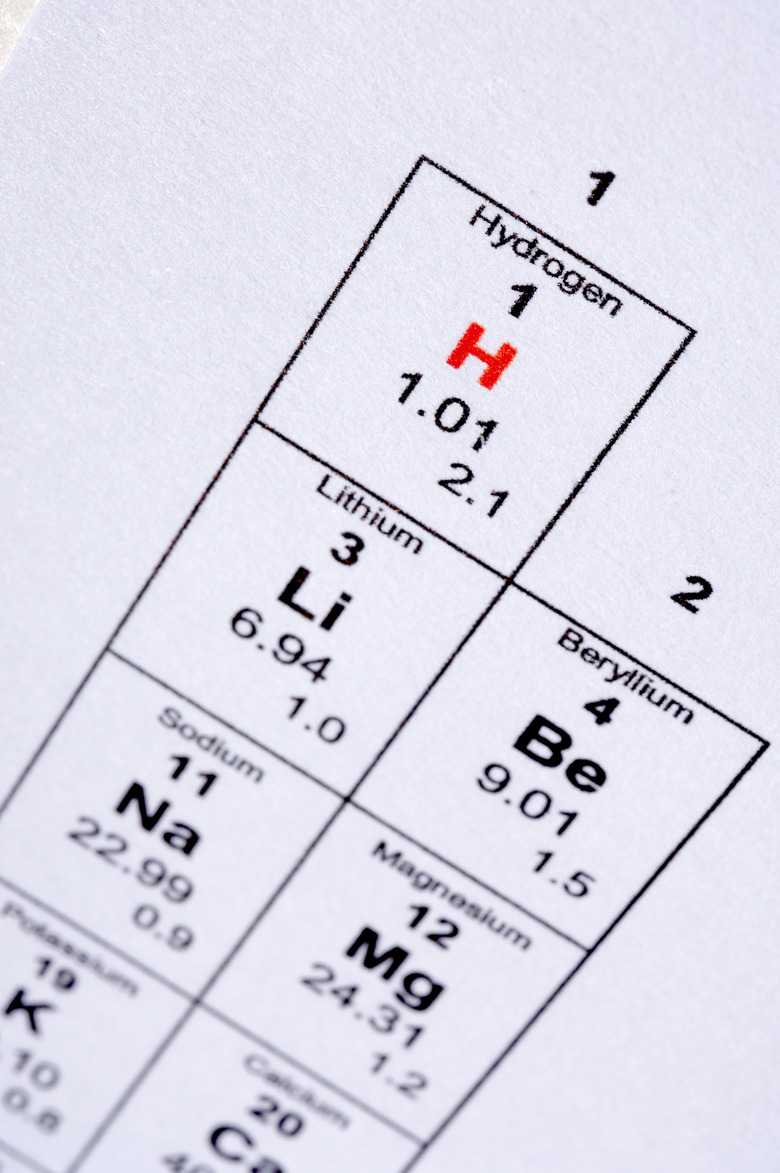Characteristics Of A Proton
Modern science gradually discovered the remarkable fact that all matter — despite countless variations in physical and chemical properties — is made from a relatively limited group of basic units known as atoms. These atoms, in turn, are simply different arrangements of three fundamental particles: electrons, neutrons and protons. In a certain sense, the proton is the defining subatomic particle because an atom is classified as a specific element based on its number of protons.
A Balanced Atom
A Balanced Atom
Protons are located in an atom's nucleus, which is a compact core in the center of the atom. Most nuclei also contain neutrons. Perhaps the most essential characteristic of a proton is its positive electrical charge. This charge is equal in magnitude to the negative electrical charge of the electron, which means that the charge of one proton balances out the charge of one electron. Neutrons have no electric charge, so an atom has an overall neutral charge as long as its number of electrons is equal to its number of protons.
Proton Measurements
Proton Measurements
Protons have a minuscule yet nonzero mass. In fact, protons and neutrons form most of the mass in the universe — all matter is composed of atoms, and the mass of atoms is attributable primarily to protons and neutrons. The mass of one proton is 1.67 x 10^-27 kilograms; this is very similar to a neutron's mass but far greater than an electron's mass, which is 9.11 x 10^-31 kilograms. A proton, though almost inconceivably small, also has measurable physical size. Modern research indicates that a proton's diameter is about 1.6 x 10^-13 centimeters.
A Stronger Force
A Stronger Force
Coulomb's law states that electric charges with opposite polarity experience an attractive force, and electric charges with the same polarity experience a repulsive force. It also states that this force is inversely proportional to the square of the distance that separates two point charges. Thus, the magnitude of the electric force between two point charges increases toward infinity as the point charges get very close to each other. This means that the protons packed into an atom's nucleus experience an enormous repulsive force. The nucleus remains intact, though, because of something called the strong force. One of the four fundamental forces, the strong force acts on protons and neutrons and is able to hold them together because it is stronger than the electric force between protons.
Donated Protons
Donated Protons
In the context of physics, protons are typically discussed specifically as subatomic particles. Chemists, however, use the terms "proton" and "hydrogen ion" somewhat interchangeably. Hydrogen atoms have one proton and one electron, and most have zero neutrons. Consequently, when a hydrogen atom loses its electron and becomes an ion, all that remains is a single proton. This fact is an important aspect of chemistry because the concentration of hydrogen ions in a solution determines the solution's degree of acidity. In other words, what makes a substance acidic is its ability to donate protons to other substances during chemical reactions.
Cite This Article
MLA
West, Joseph. "Characteristics Of A Proton" sciencing.com, https://www.sciencing.com/characteristics-proton-12261/. 24 April 2017.
APA
West, Joseph. (2017, April 24). Characteristics Of A Proton. sciencing.com. Retrieved from https://www.sciencing.com/characteristics-proton-12261/
Chicago
West, Joseph. Characteristics Of A Proton last modified August 30, 2022. https://www.sciencing.com/characteristics-proton-12261/
